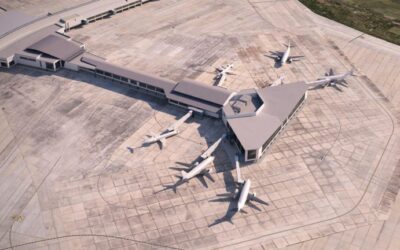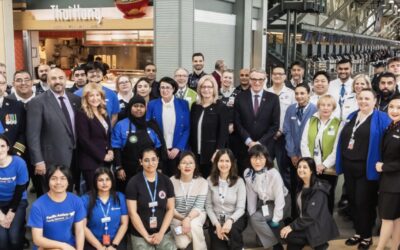
It’s been just over a year since John (Jack) Potter took over as president and CEO of the Metropolitan Washington Airports Authority (MWAA) on June 22, 2011. Formerly the postmaster general of the United States, Potter was tapped to manage MWAA’s two airports, !Ronald Reagan Washington National (DCA) and !Washington Dulles International (IAD), which together serve more than 40 million passengers annually. MWAA also operates the Dulles Toll Road and is constructing the Dulles Corridor Metrorail Project, a 23-mile rail extension of the Metrorail system.
MWAA recently completely an expansion of the International Arrivals Building at IAD, a project that capped a series of upgrades and expansions at both airports. Concessions at both airports will likely undergo an overhaul in the near future. Responses were due June 5 to a request for proposals for a firm to market, lease and manage the food and retail concessions at both airports, a role currently filled by !Westfield Concession Management. ARN spoke with Potter about his first year on the job, current operations and his vision for the airports going forward.
ARN: You recently completed the expansion of the international arrivals building at IAD. Can you give me an overview of the project?
Potter: Basically it doubled the size of our footprint for Customs and for arriving passengers from around the world. We doubled the carousels for baggage, we increased the number of stations that the Customs agents have to greet our visitors. We’ve put an infrastructure in place at Dulles that will truly [allow us to] grow from our 6.5 million [international] passengers. We can accommodate them and we can probably accommodate another 4.5 million [international] passengers within what we’ve built. We’re ready for international growth, and that’s one of the strong points when you look at air travel.
ARN: Was this a congestion mitigation effort or a look-ahead in anticipation of growth?
Potter: It was both. We were constrained in terms of capacity. And if you’re going to do it, you don’t just build for today, you build in anticipation of growth. We had a $5B capital project for Dulles where we expanded the ticketing area, the arrivals terminal and the passenger terminal. We built an underground train system that takes people out to the two concourses that we currently have. We built a fourth runway. When it comes to capacity, Dulles airport has huge growth potential within its existing footprint, but more important, it has an abundance of land. That’s probably unique on the East Coast for a major airport.
Read the entire interview in the upcoming issue of ARN! Click Here to subscribe!





